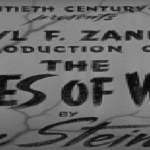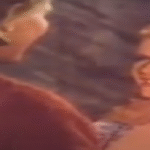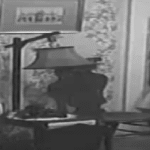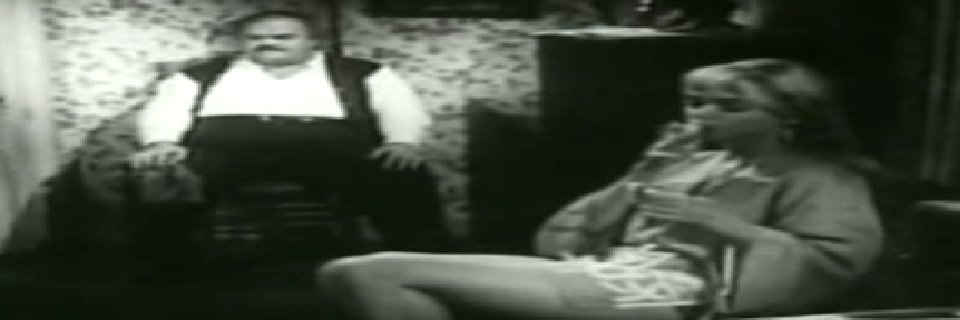Attack of the Giant Leeches, directed by Bernard L. Kowalski and produced by the prolific Roger Corman, is a low-budget science fiction horror film released in 1959. Set in the swamplands of Florida, the film combines Cold War anxieties with creature feature tropes, resulting in a pulpy and atmospheric tale of nature gone monstrously awry. With a runtime of just over an hour, it delivers a fast-paced narrative filled with suspense, melodrama, and the eerie menace of the unknown lurking beneath the murky waters.
The film opens in a small rural town near a vast swamp, where life is slow and insular. The area is quiet, populated by simple folk who live off the land, largely disconnected from the outside world. It is in this seemingly peaceful setting that strange occurrences begin to unsettle the locals. The first signs of trouble appear when Lem Sawyer, a local trapper, stumbles out of the swamp in a state of panic, claiming to have seen something unnatural, a monstrous creature with long, slimy arms. His claims are dismissed as drunken nonsense by the sheriff and the townspeople, who are quick to write off Lem as an unreliable old man.
Shortly after, Lem vanishes without a trace, and it is not long before other people begin to disappear as well. Among the missing is Liz Walker, a flirtatious and manipulative woman married to the hot-tempered Dave Walker. Liz is caught in an affair with another local man, Cal Moulton, and the town’s gossip mill is quick to churn with speculation. Dave, consumed by jealousy and rage, forces the pair at gunpoint into the swamp, where he believes their shame will be punishment enough. However, as they venture into the wilderness, they encounter something far worse, monstrous, tentacled creatures emerging from the depths to drag them into the water.
These creatures, as it turns out, are the titular giant leeches. Mutated by exposure to radiation – a nod to the post-war fear of nuclear fallout – they have grown to enormous size and have developed semi-intelligent behaviours, creating an underwater lair deep in the swamp’s dark recesses. Rather than killing their victims outright, the leeches imprison them in a submerged cavern, draining their blood slowly over time, feeding off them in a horrific, parasitic manner. This grotesque feeding process adds a layer of terror to the story, turning the creatures into a sustained threat rather than just mindless monsters.
The central characters attempting to unravel the mystery are Steve Benton, a well-meaning and level-headed game warden, and Nan Grayson, his girlfriend and the daughter of a local store owner. Steve is one of the few people who takes the early reports of strange activity seriously. Concerned by the mounting disappearances and disturbed by the lack of action from the local authorities, he begins his own investigation into the swamp. Nan, loyal and resourceful, supports him despite the danger and scepticism from those around them.
As Steve begins to connect the dots, he faces resistance from Sheriff Kovis, a stubborn man unwilling to believe that anything unnatural is occurring. The sheriff’s dismissiveness reflects a broader theme in the film – the institutional reluctance to confront emerging threats, a theme often found in Cold War-era cinema. It is only after the bodies of Liz and Cal are discovered, pale and drained of blood, that the authorities are forced to acknowledge that something truly sinister is at work.
The final act of the film focuses on the efforts to destroy the creatures and put an end to the nightmare. Steve, convinced that the creatures dwell in an underwater cave, organises a dive into the swamp’s depths to locate and destroy their lair. Armed with dynamite and determination, he ventures into the murky water, accompanied by a few brave volunteers. The scenes in the swamp are tense and claustrophobic, with the still, dark water creating a pervasive sense of dread.
When the leeches appear in their full monstrous form, their design – though rudimentary due to the film’s budget – is effective in its own right. The costumes, reportedly made of rubber and black plastic bags, are crude, but the slow, lumbering movements and the eerie setting give them a strange, dreamlike quality. Their very existence, as mutations born from man’s technological hubris, aligns with the period’s obsession with science gone awry.
The climax arrives as the dynamite is detonated, causing a massive underwater explosion that collapses the creatures’ lair. The water bubbles and froths, suggesting that the monsters have been destroyed, though the final shots leave just enough ambiguity to provoke lingering fear. As the characters emerge from the ordeal, bloodied but relieved, there is a sense of temporary triumph, though the swamp remains a mysterious and haunting place.
Attack of the Giant Leeches is a film deeply rooted in its time, both in style and substance. It mirrors the 1950s fascination with nuclear science, mutation, and the fragility of civilisation when faced with the unknown. The monsters serve not only as physical threats but also as metaphors for the lurking dangers of unchecked progress and the hidden costs of industrial ambition. The swampland, so crucial to the film’s atmosphere, becomes a symbol of the unconscious – dark, primal, and filled with things humanity is not meant to disturb.
Despite its modest production values and often wooden performances, the film maintains a certain charm. The earnestness of the cast and the sheer audacity of its premise lend it a cult appeal that has endured across generations of horror and science fiction fans. It fits squarely within the creature feature tradition, where man must face the consequences of meddling with nature, and where monsters reflect societal fears in grotesque form.
Roger Corman’s influence as producer is evident throughout. Known for his efficiency and ability to craft compelling stories on shoestring budgets, Corman understood how to tap into the public’s subconscious concerns. With a budget of just $70,000, Attack of the Giant Leeches manages to be both entertaining and unsettling, making effective use of swamp locations, shadowy cinematography, and sound design to create tension.
Its legacy continues through countless television screenings, home video releases, and affectionate parody. It is often cited among classic B-movies for its combination of absurdity, suspense, and charm. Though it may not have the polish of mainstream studio films, it possesses a raw creativity and energy that more than compensates







